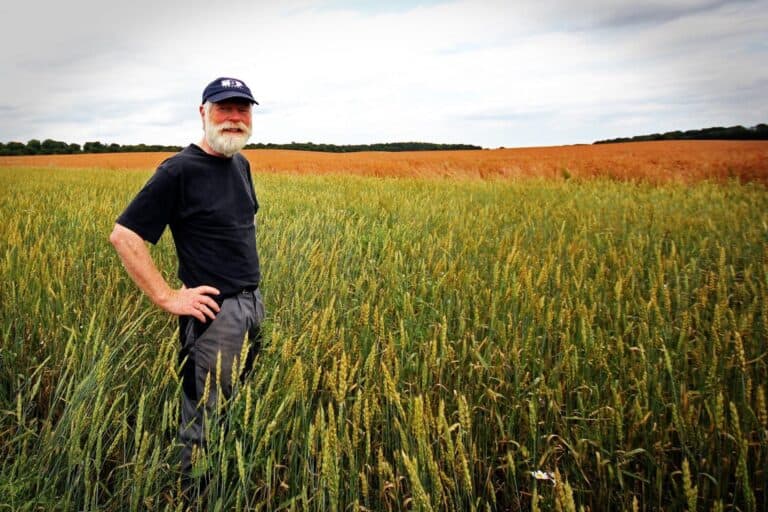Understanding terrain features is vital, both for the purposes of overland navigation and route planning, and also for tactical proficiency when operating in the field.

Disregarding terrain and trying to blunder your way through is going to make your life miserable, difficult, and potentially deadly depending on the circumstances.
We covered the five major terrain features previously, and today I am back to take you through the three minor terrain features you need to know.
Yes, they may be called minor terrain features, but they are still majorly important for your purposes. Lace up your boots and let’s get a move on.
Draw
A draw is like a valley, except that it is much smaller, and generally contains no level ground whatsoever along the low point. The ground on either side of a draw slopes upwards towards the head (or beginning point) of the draw.
These are usually easy to spot on maps because there’s a successive line of v-shaped notches in contour lines, typically pointing up towards a ridge.
Draws are typically formed by flooding events, and may be found on flat terrain but there are typical of ridges and hills.
This is something to keep in mind if you ever travel near or along a draw, because a sudden rain event or precipitous snow melt might cause a flash flood that can bowl you all the way down the slope.
Tactically, draws can provide opportunities for cover and concealment, but they are difficult to move along because they don’t contain flat ground as mentioned.
Spur
A spur is a short, steadily sloping area of higher ground that is typically jutting out from the side of any given ridge. Spurs are often formed by parallel streams of water cutting draws, described previously, down the sides of a ridge.
In a way, you can think of it as a short, almost self-contained ridge traveling perpendicular from the primary ridge.
This is a subtle terrain feature, but learning how to maximize its benefits according to your direction of travel while minimizing its impediment can help you find a maximally efficient route.
Tactically, depending on your location and the location of potential enemies, a spur might provide the best possible terrain to take cover in or hide if both parties are on the same side of a ridge at about the same level.
Cliff
A cliff is exactly what it sounds like. It is technically a slope, but they are truly vertical or nearly so. You can fall off of a cliff’s edge, but you fall down other slopes!
If you don’t have climbing gear, cliffs are impassable or they will prove extraordinarily dangerous to traverse otherwise unless they are very short.
Cliffs will generally dictate your path of movement around them, and tactically you must be aware of them because if you are herded toward them you’ll have nowhere to retreat to.
Setting up near a cliff can also be a huge advantage for an observation point because they typically provide commanding views of the terrain below them.
Cliffs also prevent people from approaching from below them unless there are trails and switchbacks that might allow someone to bypass it.
You Still Need to Know These Minor Terrain Features for Efficient Route Planning
Even though these terrain features are referred to as minor, they’re still seriously important for your overall understanding of topography, maps, overland navigation and travel as mentioned previously.
Like the old saying says, “the devil is in the details,” and if you only look for the major terrain features of hills, valleys, ridges, saddles, and depressions you might miss what these lesser features are telling you.
Getting yourself caught in a treacherous saddle with cliffs on either side might mean certain death in case of a flash flood, avalanche, landslide, or the like.
If you’re trying to stay concealed while climbing a hill, spurs and draws might afford you that capability whereas a smooth and featureless hill would not.
There are many more examples besides, these are just a couple, but you should be thinking about the terrain in totality.
Understanding Minor Terrain Features Can Help You Maximize Tactical Awareness
When it comes to a firefight, even the smallest and subtlest terrain features can be used to your advantage, or used by the enemy to hurt you.
It’s surprising where a human being can hide, and if mentally you have accepted the notion that you’re traveling over relatively smooth and featureless terrain.
You’ll be wide open to ambush from someone who knows how to maximize the terrain features we discussed. This can be put to use offensively or defensively as required…
Someone who has a masterful understanding of terrain will be able to find their way in, just as importantly out, of areas that are under observation or protect themselves from gunfire when your attackers might otherwise think you have nowhere to go.
Of course, theory is fine but experience is final: grab your topo map, get out there and start applying what you have learned so you can start leveling up your fieldcraft.
The post The 3 Minor Terrain Features To Know appeared first on Survival Sullivan.
By: Tom Marlowe
Title: The 3 Minor Terrain Features To Know
Sourced From: www.survivalsullivan.com/minor-terrain-features/
Published Date: Mon, 14 Aug 2023 16:00:00 +0000
------------------------
Did you miss our previous article...
https://bushcrafttips.com/bushcraft-news/can-you-drink-boiled-salt-water-in-an-emergency
 What is BushcraftSurvival SkillsToolsVideosBushcraft CampsBushcraft KitsBushcraft ProjectsPrivacy PolicyTerms And Conditions
What is BushcraftSurvival SkillsToolsVideosBushcraft CampsBushcraft KitsBushcraft ProjectsPrivacy PolicyTerms And Conditions
